
ACK DIOCESE OF MOMBASA
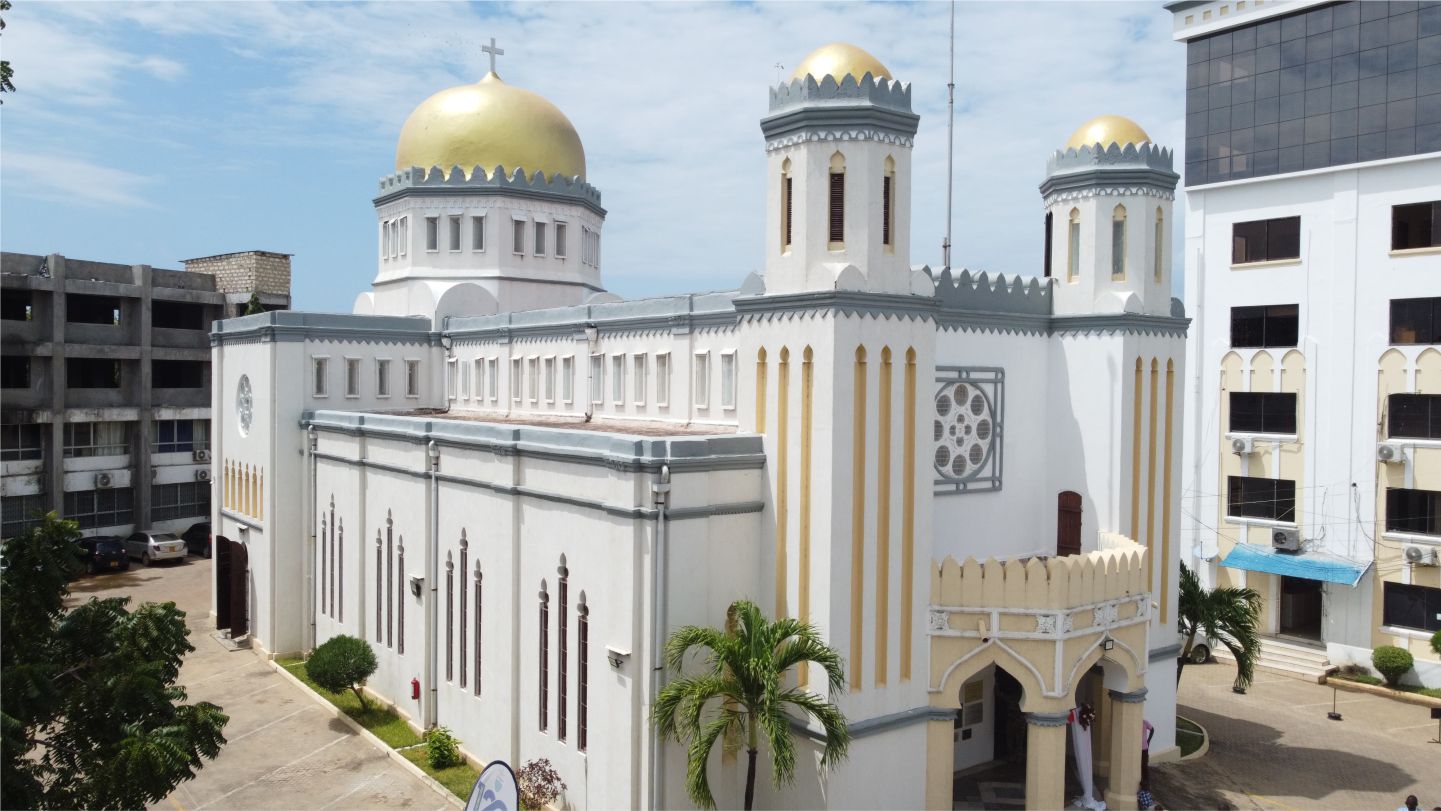
The Mombasa Memorial Cathedral is an Anglican Church that dates from British colonial times. Interestingly, the church has a similar appearance to that of the many mosques in the city, because it was designed to blend in with the local architecture. This white-colored church has arches and a silver-colored dome.
Missionaries had been sent to East Africa by the Church Missionary Society in England since 1844. Eventually the Missions across Eastern Africa were brought together through the creation of the Diocese of Equatorial East Africa in 1884. Its founding Bishop was James Hannington. He would be martyred and his successor Henry Parker would die from Malaria whilst on a Missionary journey-all within five years.
The third and quite unique Bishop was Alfred Tucker. He would consolidate the work begun and then become the First Bishop of a new Diocese - Uganda. This precipitated the creation of the Diocese of Mombasa in 1898, covering what is now Kenya, N. W. Tanzania and a small part of Uganda.
The founding Missionary Bishop was a brilliant visionary and administrator, Dr. William Peel. At his Consecration in 1899, in his Sermon he said, "Our first priority will be to build our Cathedral. It will be a Powerhouse of Prayer and an Anchor for the Diocese in times of challenge".
So our story begins when Bishop Peel met Sir Charles Elliot, The Governor of the Protectorate- " Sir, I need your help. "Your Grace, I gladly give it 1" It was to prove to be a most remarkable partnership and you stand in the midst of the outcome of their work creating Sinclair's quite unique design. Gloria in excelsis Deo !
Look out for the small wall plaques showing the Diocesan Coat of Arms. Each plaque gives points of interest and some surprises as well! We have a few mysteries too.... Start in the North Aisle which is on your left as you enter the Cathedral through the West Doors. The floor plan may help you find the features of interest - enjoy !
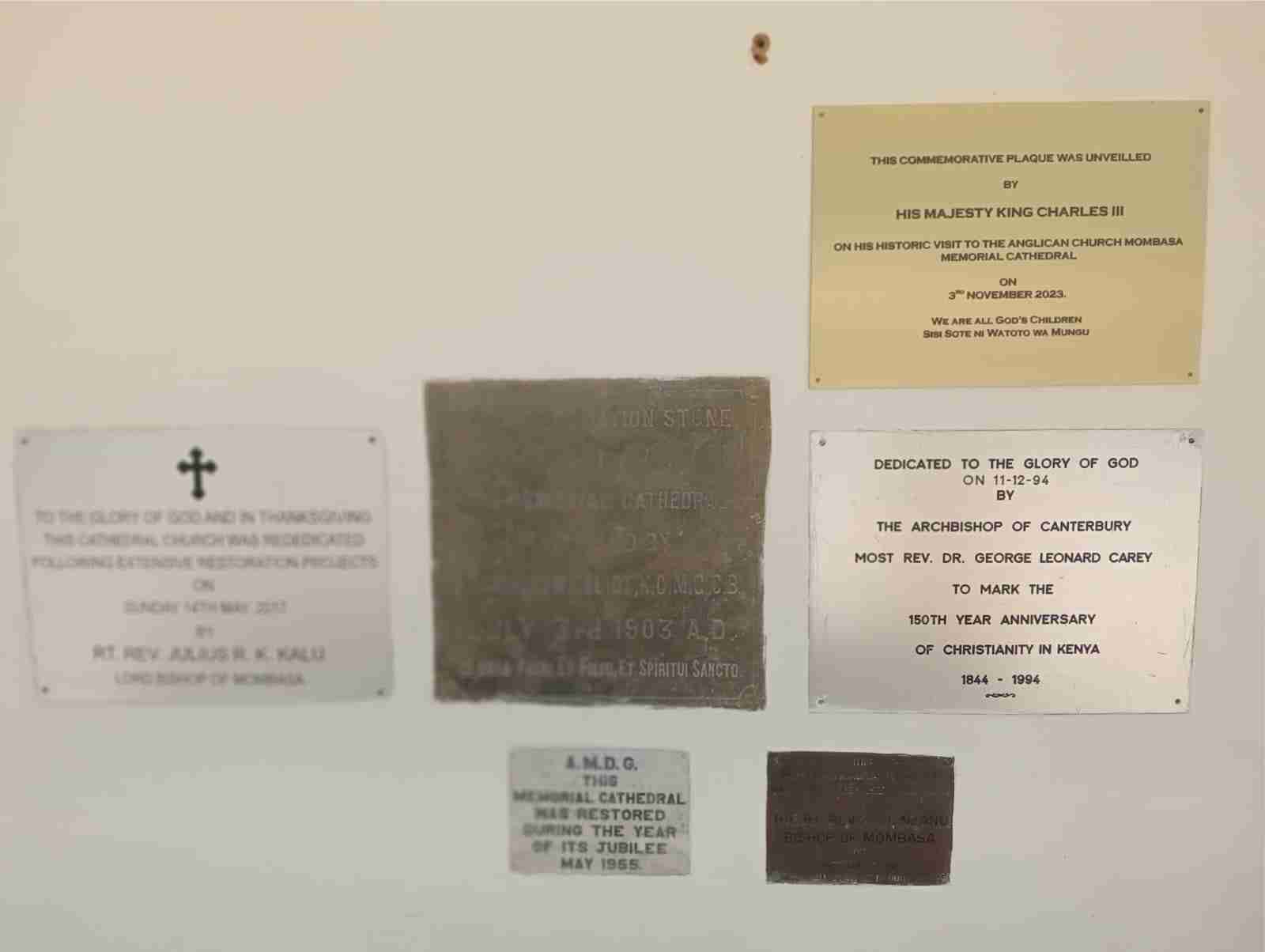
Here we find some plaques including the Foundation Stone, which was belatedly laid in July, 1903. The Porch was the last part of the Cathedral to be constructed. Work only began after the Bell Frame had arrived from England and been hoisted into place in the North West Tower, which was also awaiting completion.
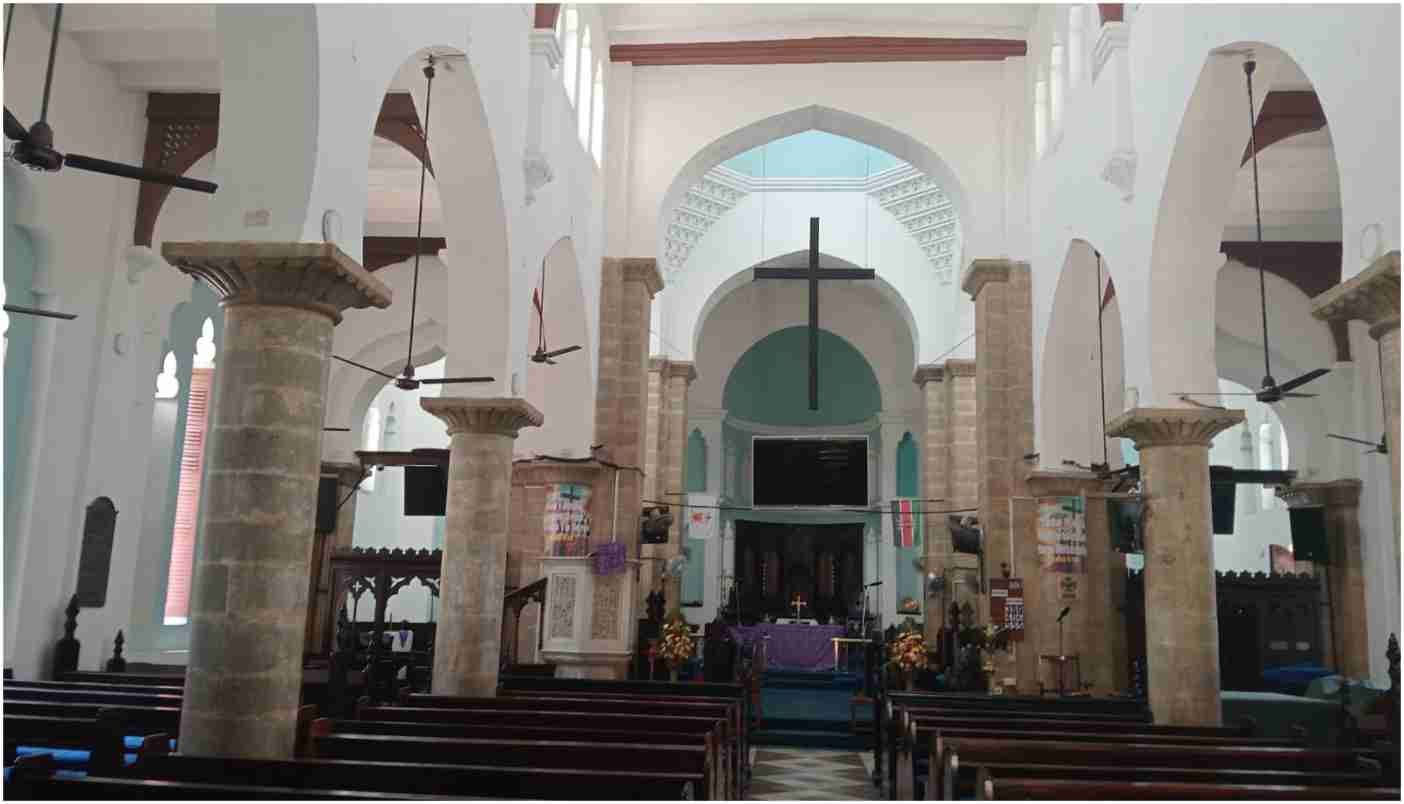
This is the main body of the building, called the Nave or People's Church. The pillars are Romanesque in Style, with Swahili Arches above the Cushion Capitals. The Roof is composed of laterally placed concave concrete slabs, very much a Coastal construction feature. All of these features combine to provide the Cathedral with world-class Acoustics for the enjoyment of fine music.
Turn left into the North Aisle. On your left, you will find the first Visitor plaque.

The Chapel was located at the rear of the North Aisle, opposite the Baptistry, from 1919 - 1937, when it was dismantled.
As you walk eastwards towards the Trinity Screen, look for the framed Visitor plaques concerning the PULPIT, PASCHAL CANDLE STAND.....and also....the hidden "echo of a Colonial past" !
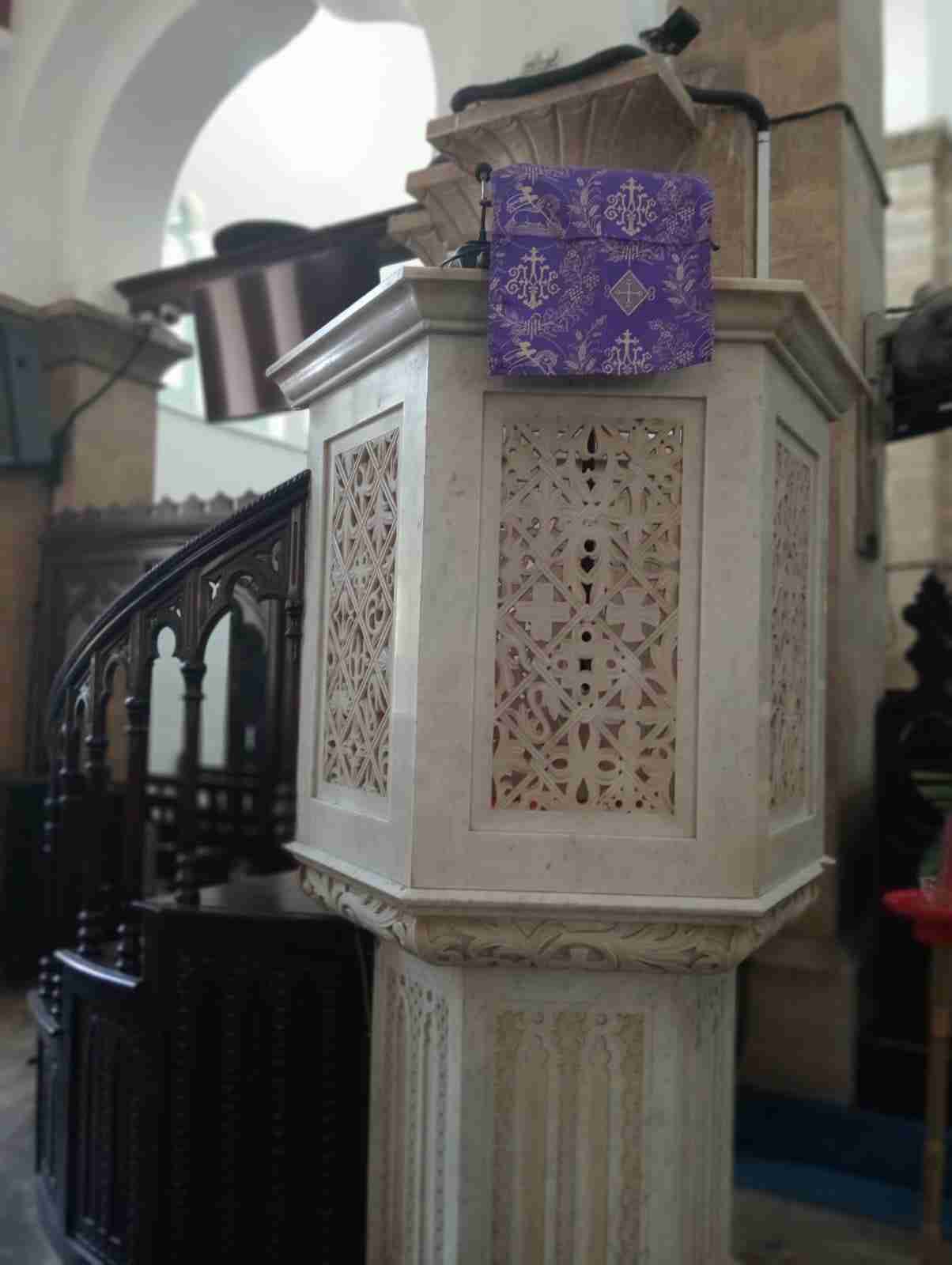
The Screen is one-half of a larger screen which originated in Milton Abbey, Dorset, England. The little Lady Chapel has some special features - as well as a mystery! Look for the Visitor Plaques....
From the Lady Chapel take the short passage through the Chapel Side Screen into the Chancel.......
Look above you at the magnificent centre piece of the Cathedral which was dedicated in memory of the First (Martyr ) Bishop of Equatorial East Africa, Rt. Revd. James Hannington.
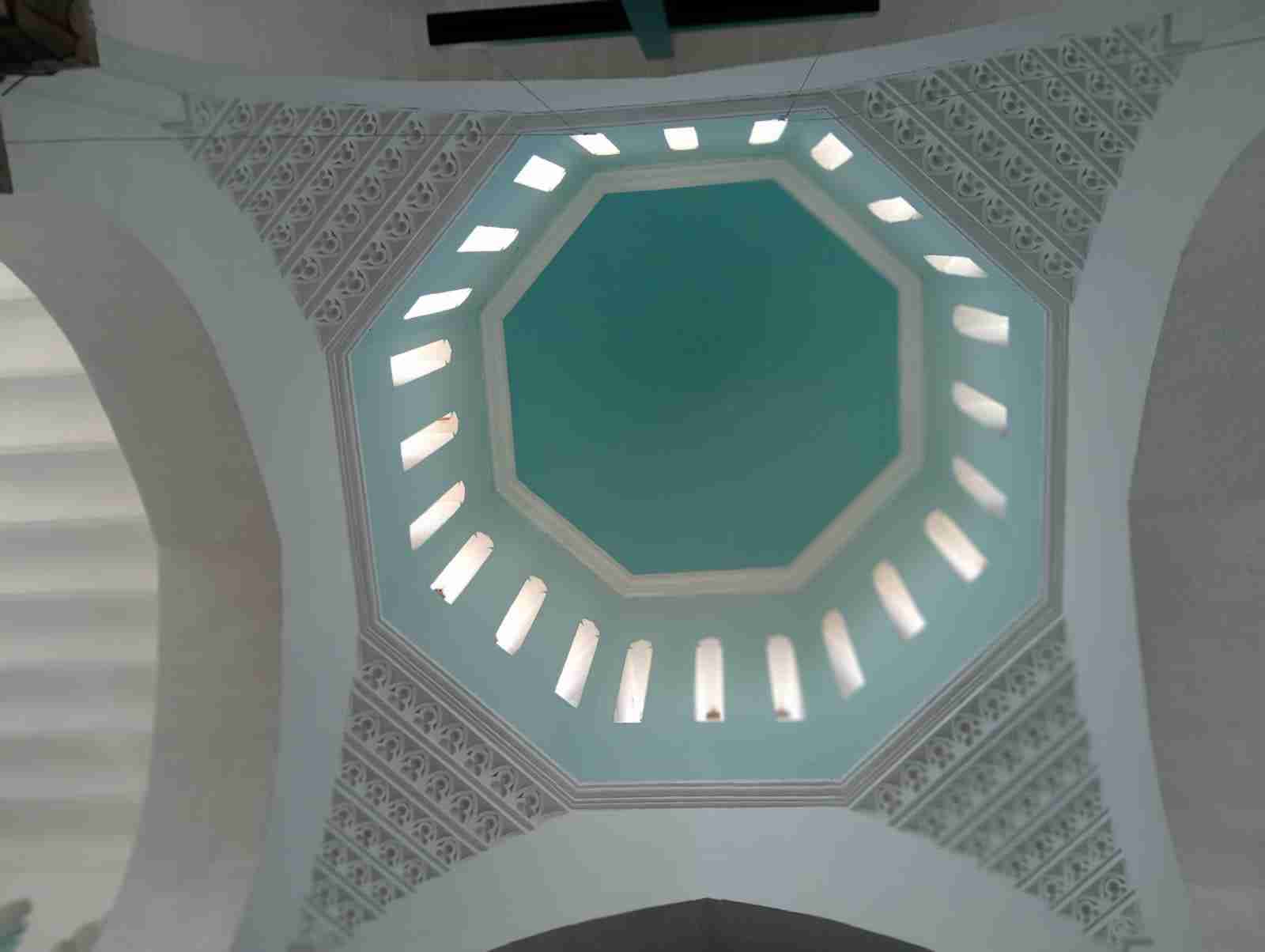
Look closely just below the Octogon, how may Angels do you see?
These very fine Rails were installed in memory of Rt. Revd. Alfred James Tucker R.A., the 3rd Bishop of Equatorial East Africa, whose move to Uganda to complete Bishop James Hannington's work, precipitated the dismantling of the Diocese of Equatorial East Africa and the creation of the Dioceses of Uganda and Mombasa in 1898.
Many will not know that our third Bishop was a very famous Landscape Painter before he belatedly entered the Ministry. His paintings were highly sought after and he was elected to the prestigious Royal Academy where his works were regularly shown.
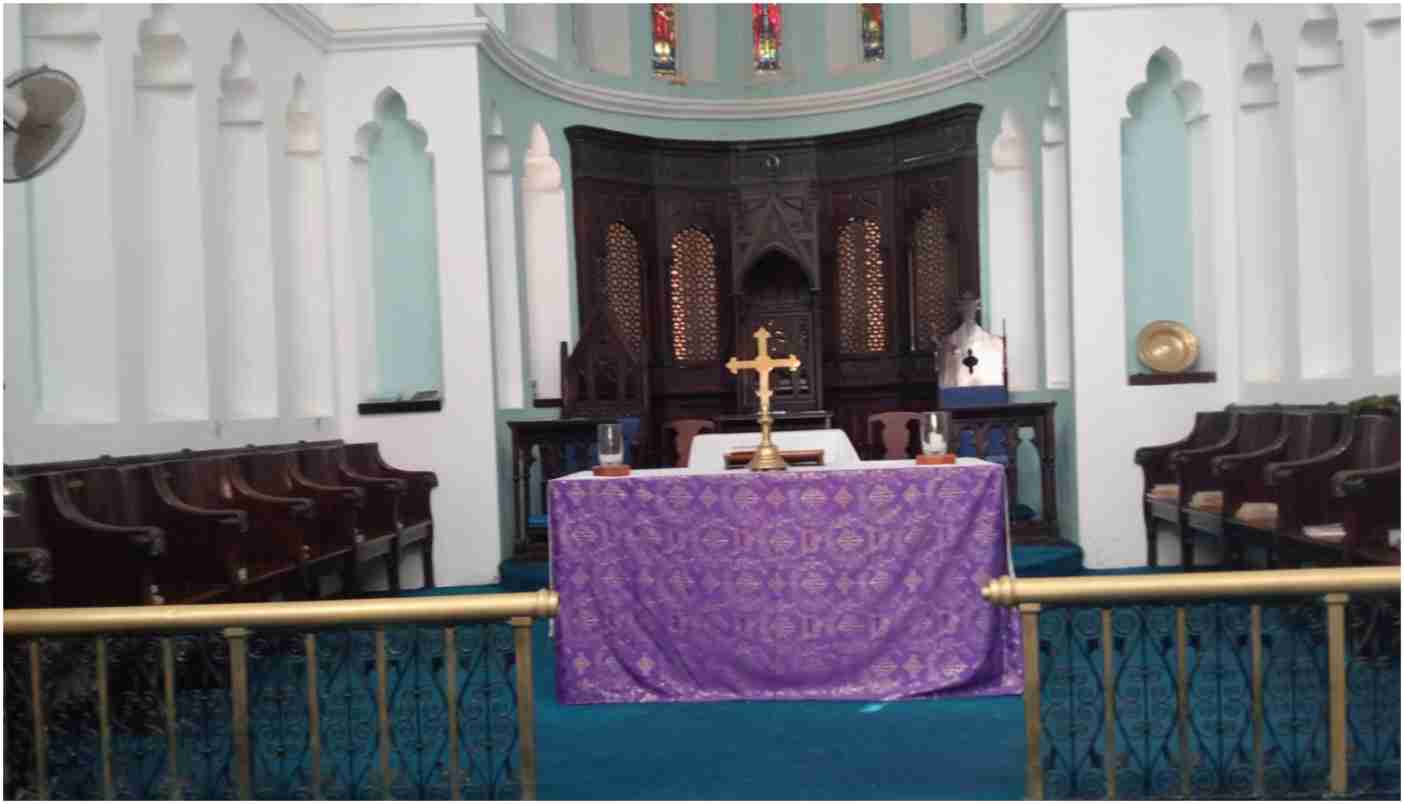
The stained glass originates from St. James the Great, Barton, Bristol, England. It was also part of the memorial thanksgiving for the Ministry of Bishop Tucker who was a well-known Royal Academician. The 1662 Canonry Stalls have recently been relocated here after being placed under the Dome since 1920. :
The Apse Screen was installed in 1912 in thanksgiving for the great support by Henry Fitz Gerald Bell, the first Assistant Secretary to the East Africa Protectorate who worked tirelessly to support the Cathedral building Project and in securing a Hall and Offices.
These fine Brass-finished Plaques are located on each of the four main piers that support the Octogon and the Hannington Dome. "
Poor Henry One drownded on his holiday, James was very brave and very murdered, Henry Two had malaria and cholera - and he died, then our William had malaria and typhoid and exhaustion - so he died too!"

The rear Stalls date from 1662 and originate from Milton Abbey in Dorset, England, gifted by the Hambro Family. The Reading Desks and front row of Canonry Stalls were placed in the Chancel in 1920 as a thanksgiving memorial to Bishop William Peel.
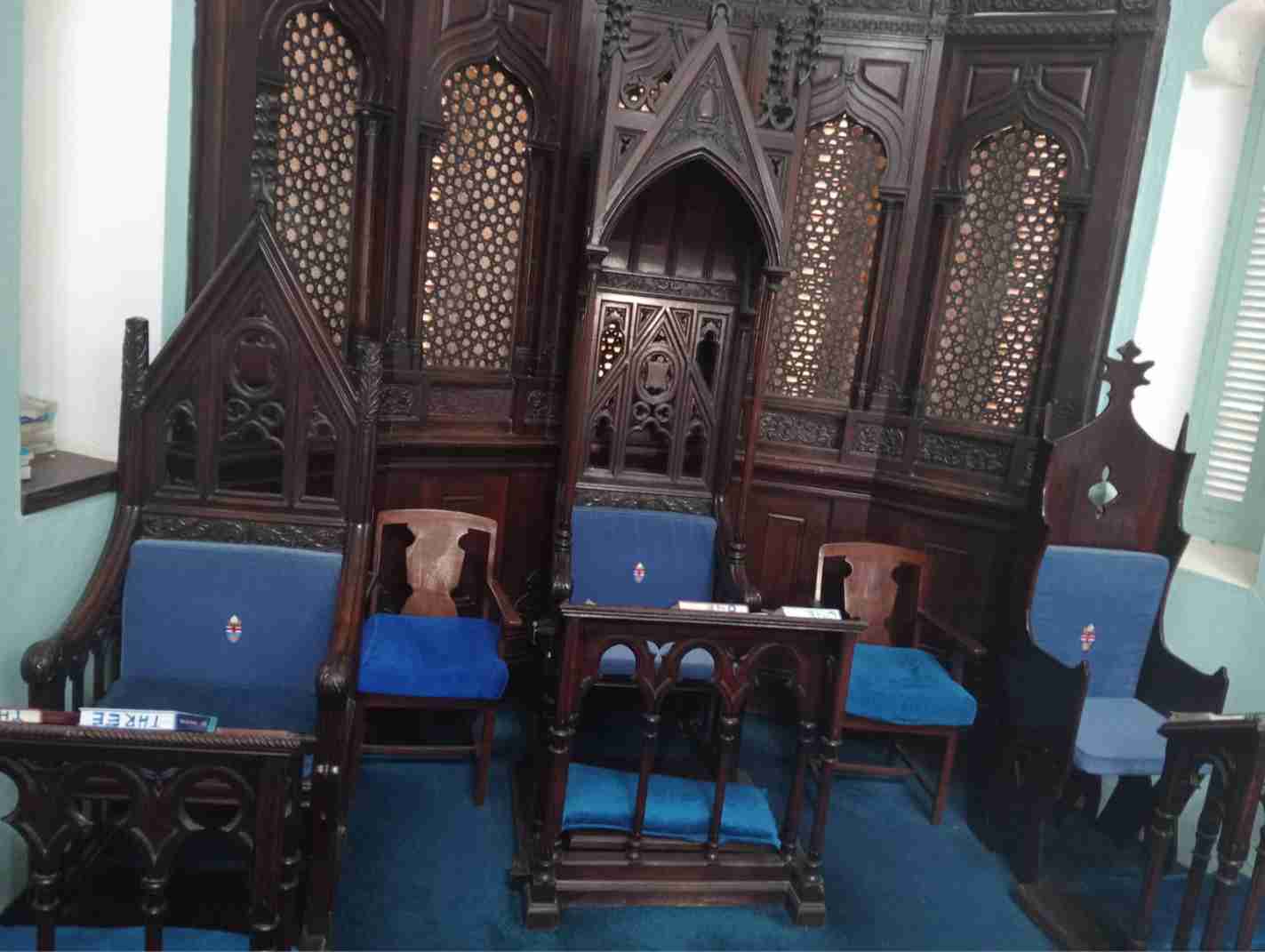
This magnificent throne in the centre of the Apse is the Seat of the Diocesan Bishop. It was built in 1903 at the direct request of the 96th Archbishop of Canterbury, Most Revd. Dr. Randall Davidson.
On the right or South side is the simple Chair Throne, built in Frere Town from Mvule wood in 1884, it was used briefly by Bishop James Hannington at the Mission Station and then St. Paul's, Rabai, before he set off on his fateful Buganda mission. It was placed in Emmanuel Church in 1889 and used by Bishops Tucker and Peel. It is most often used during Ordination and Confirmation Services.
Located on the left or North side of the Apse is one of a pair of Chair thrones also built in 1903. The other was relocated to All Saints Cathedral, Nairobi in 1935. It is currently occupied by the Dean of the Cathedral.
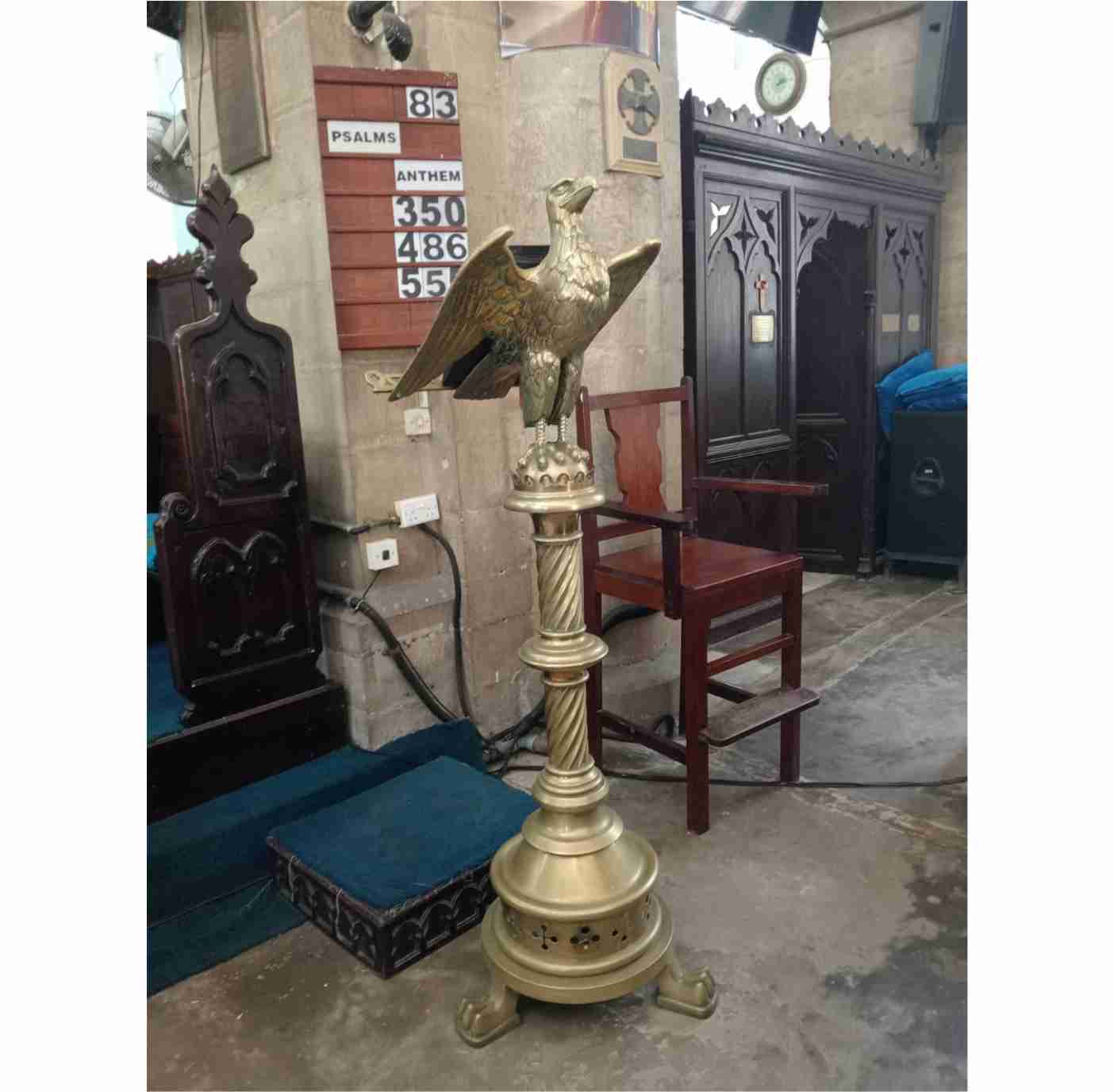
This fine example of late Victorian Craftsmanship in Brass was built in 1903 by the U.K. Church Furnishers, J. Wippel and Co. of Exeter and London. Constructed in ten pieces, it weighs 80 Kgs!
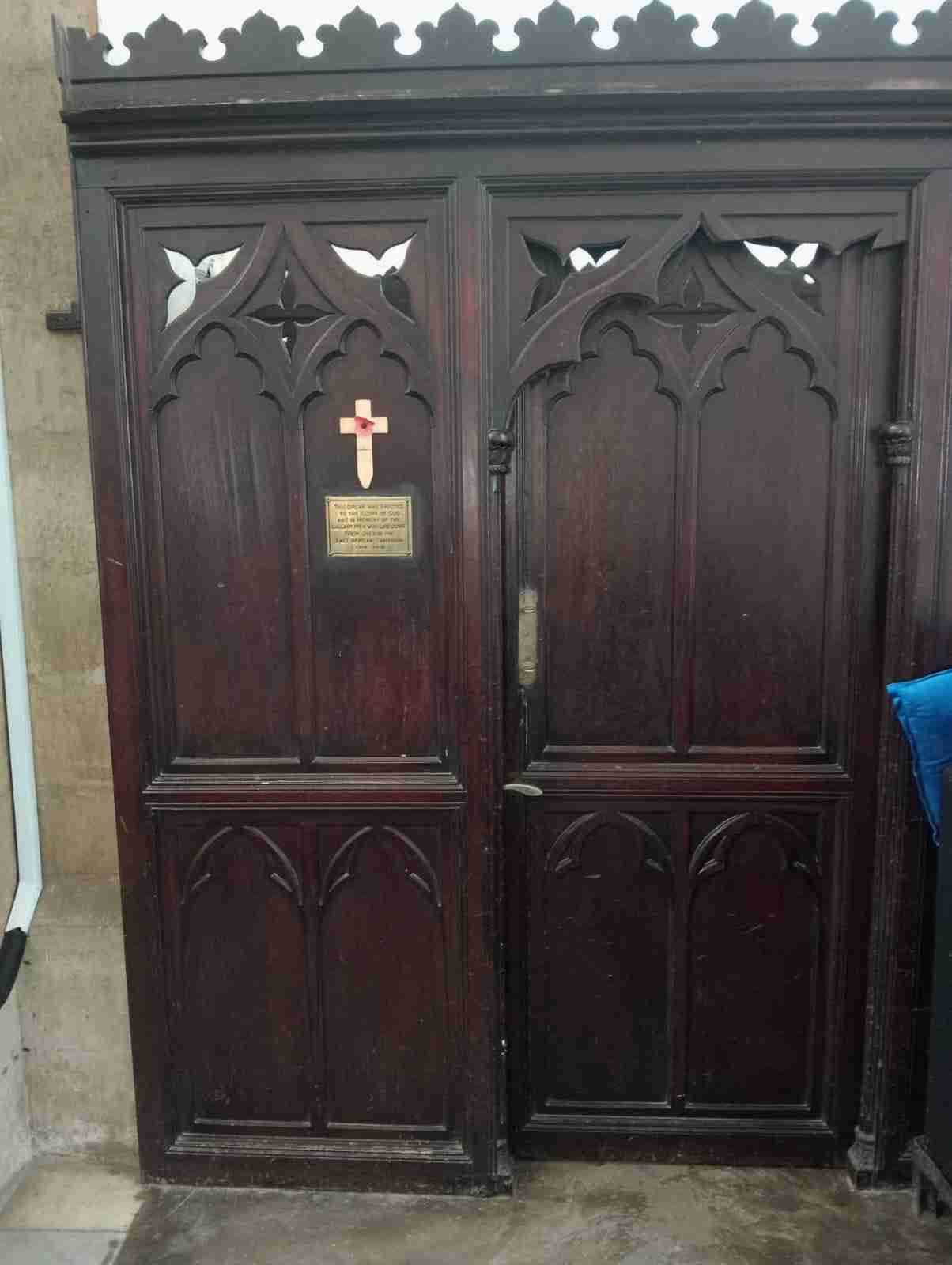
Several Memorial plaques may be found here, notably the Pipe Organ which was purchased as a memorial to all those who lost their lives in the East Africa Campaign during World War I Do enjoy the Visitors plaque - as a secret is revealed!
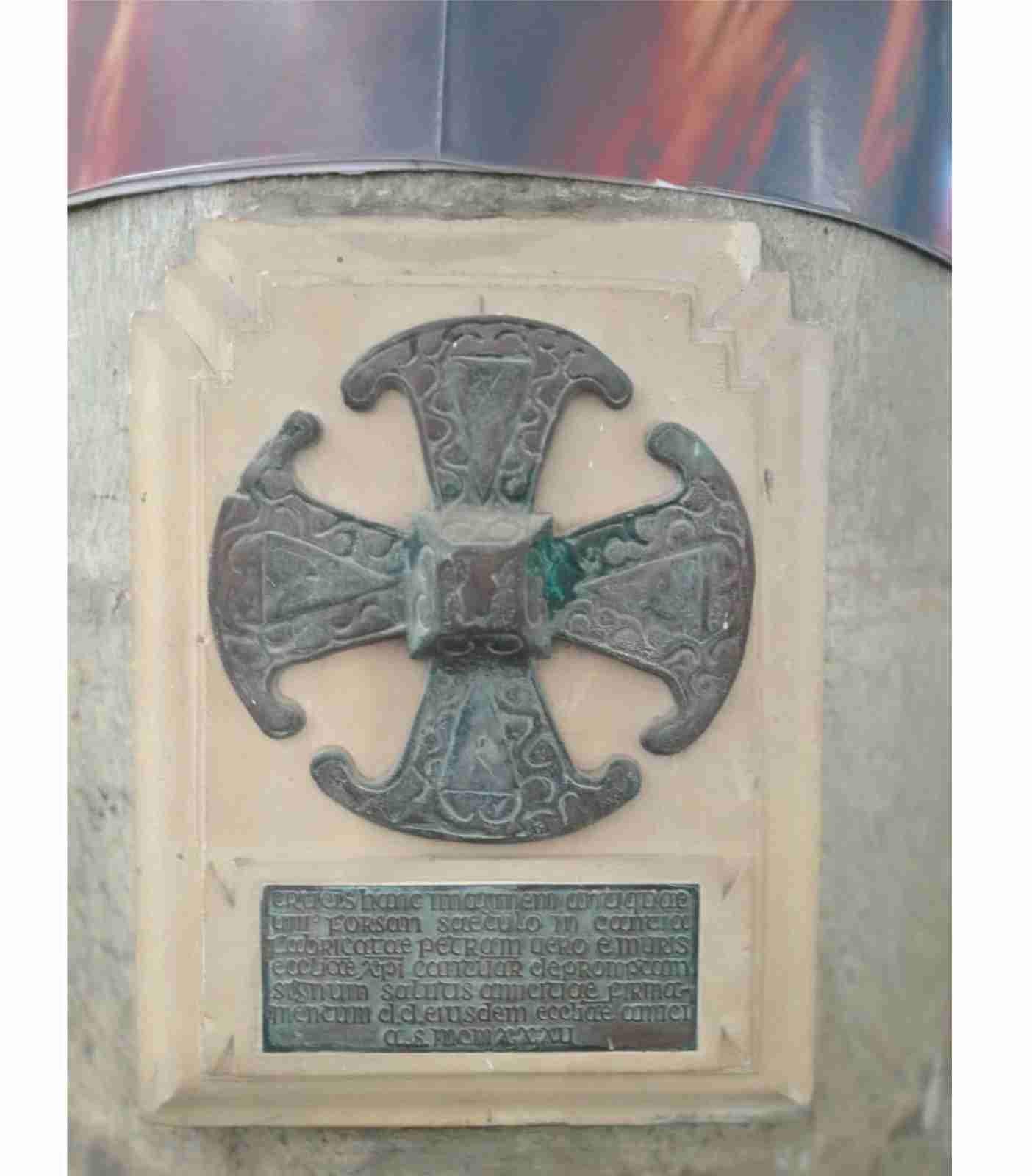
This was gifted to the Cathedral in 1935 to mark the 30th Anniversary of the Consecration of the Memorial Cathedral of St. John the Baptist. Its priceless feature is the ancient Jerusalem Cross set on a Kent quarried stone taken from the few surviving early 9th Century walls of Canterbury Cathedral in England.

This was the site of the original Chapel of St. John the Baptist. In 1919 The World War I Memorial Pipe Organ was installed here until its removal in 1960, gifted to Namirembe Cathedral in Uganda. The Transept currently houses the Clergy Vestry and Verger Office.
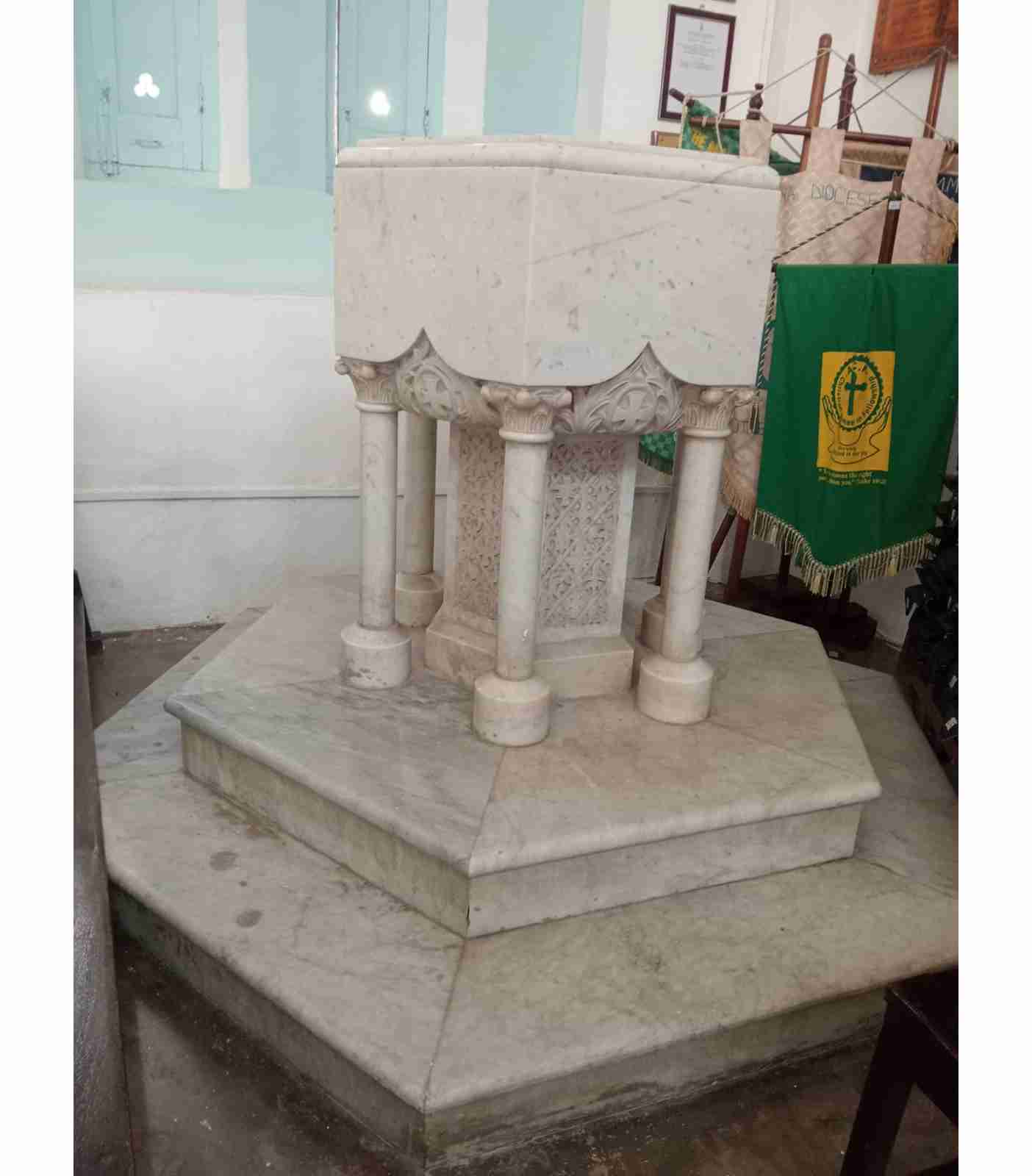
The Font is built in three sections in Carrara Marble from North- West Italy. Do enjoy reading the Visitor Plaque for the full details.
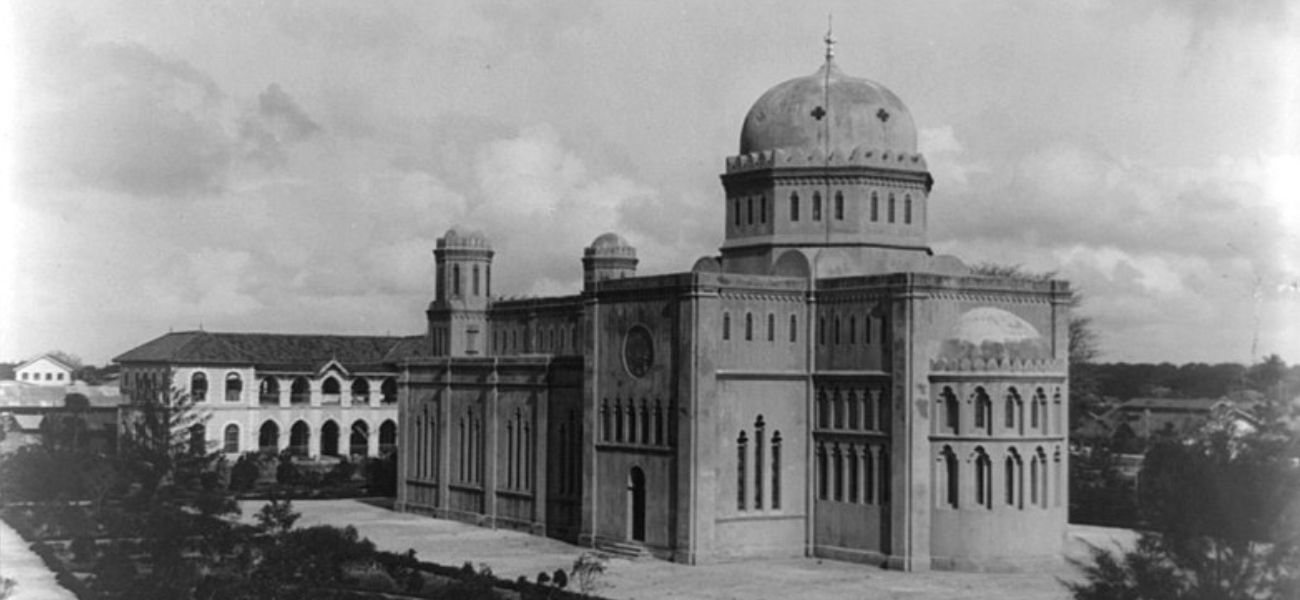
1902-19% working weeks-stopped for 2½ weeks during the Short Rains and 1 week for Christmas-New Year Festivities.
1903-43% working weeks - stopped for 5 weeks for Long Rains, Holy Week and Easter, 2½ weeks for Short Rains
1904-29% working weeks - stopped 4 weeks for Long Rains, Holy Week and Easter, 2 weeks 'lost' waiting for the Bells!
The Ground Breaking Ceremony - 24th June, 1902. The Feast of St. John the Baptist 506 working days later... The Topping-off Ceremony 29th September, 1904, Feast of St. Michael and All Angels
Due to the delay in the arrival of the Cathedral Bells into the Port of Topping-off Ceremony ! The two youngest Engineers were Mombasa, the Porch was completed just four days before the "volunteered" to climb on top of the Dome to affix the great Wooden Cross. This remained in place for 111 years until the new Cross replaced it in 2015.